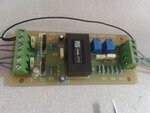PYGuj
Junior Member level 1
Hello. I am using a circuit whereby i am having both negative and positive values as output. I need to shift the negative voltage above zero so that i can input it directly to a microcontroller which can accept 0 to 3.3V at the ADC. how can i do this with the help of op amps? Thanks!!

